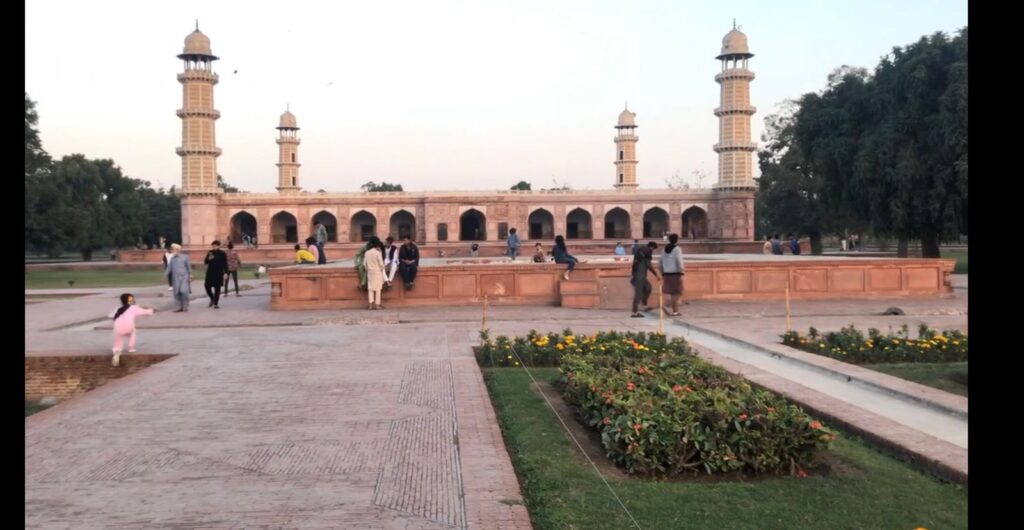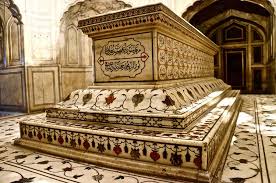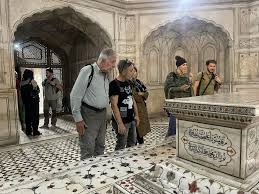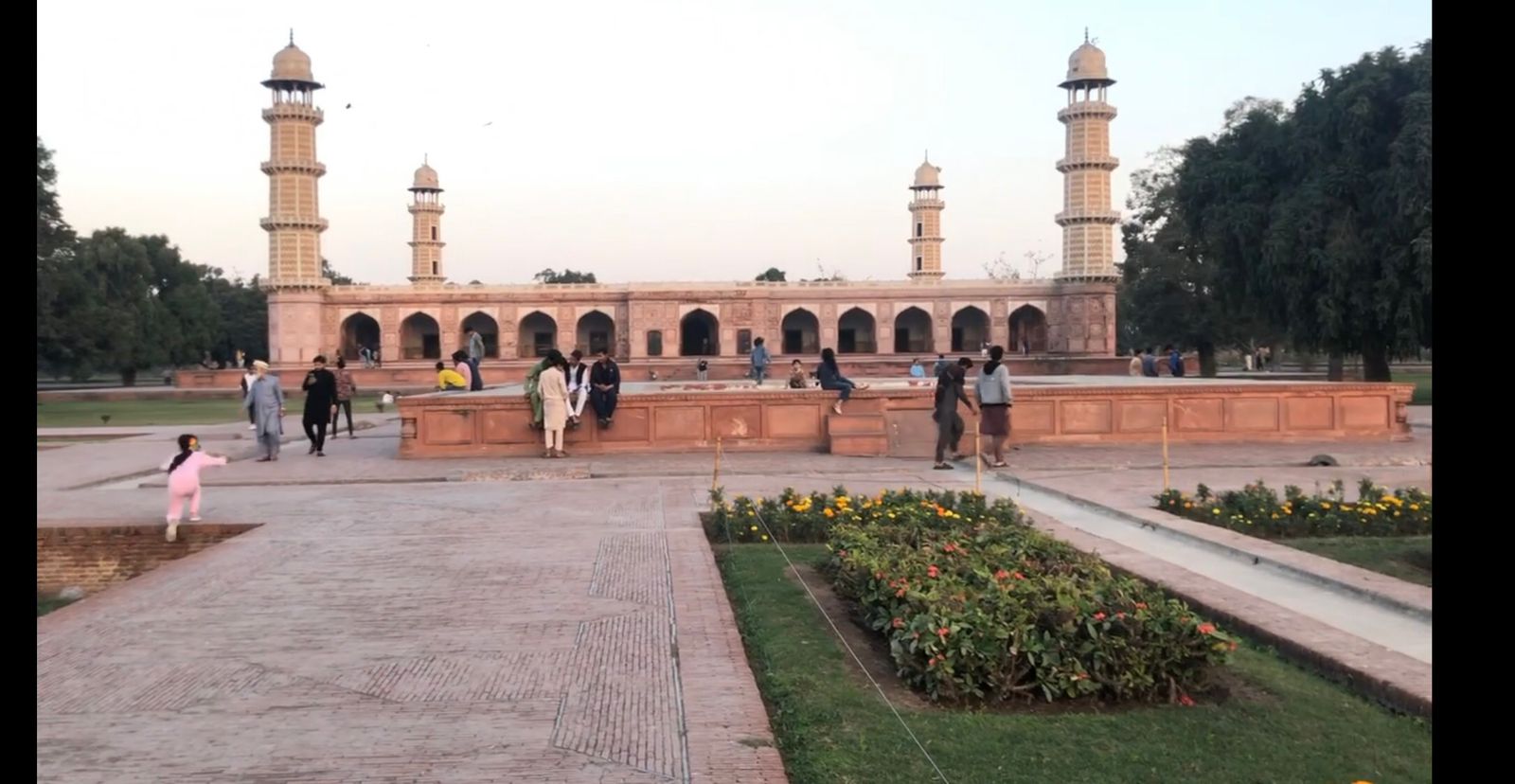
nfds.xyz
Introduction
Nestled along the banks of the Ravi River in Shahdara, Lahore, Jahangir’s Tomb is a monumental tribute to the fourth Mughal emperor, Nur-ud-din Muhammad Jahangir. Built in the 17th century, this tomb stands as a testament to the opulence, artistic brilliance, and architectural finesse of the Mughal Empire. With its intricate frescoes, Persian inscriptions, majestic gardens, and symmetrical layout, Jahangir’s Tomb is not only a significant historical landmark but also an enduring symbol of Mughal cultural heritage in South Asia.
This article delves deep into the historical significance of Jahangir’s Tomb, explores its Mughal architectural elements, and highlights its role in shaping Lahore’s cultural identity.
The Legacy of Emperor Jahangir
Who was Jahangir?
Jahangir (1569–1627), the son of Akbar the Great and father of Shah Jahan, was the fourth ruler of the Mughal dynasty. Known for his keen sense of justice, appreciation for the arts, and deep love for nature, Jahangir played a pivotal role in the cultural and political expansion of the Mughal Empire.
During his reign (1605–1627), Jahangir emphasized diplomacy, religious tolerance, and artistic refinement, leaving a legacy deeply rooted in aesthetics and literature. His tomb, constructed posthumously, embodies these ideals and reflects his grandeur.
The Historical Context of Jahangir’s Tomb
Construction and Patronage
Jahangir died in 1627 in Rajauri (modern-day Kashmir), and his body was transported to Lahore for burial, as per his wishes. The tomb’s construction began in 1627 under the supervision of his beloved wife, Nur Jahan, and was completed around 1637 during the reign of his son, Shah Jahan.
Unlike other Mughal emperors who preferred burial in Delhi or Agra, Jahangir chose Lahore, a city he loved for its gardens and natural beauty. Shahdara, with its serene atmosphere and proximity to the Ravi River, became the final resting place of the emperor.
Royal Necropolis
Jahangir’s Tomb is part of a larger necropolis complex in Shahdara, which includes:
- Akbari Sarai: A caravanserai for travelers
- Asif Khan’s Tomb: Brother of Nur Jahan
- Nur Jahan’s Tomb: Jahangir’s influential wife
Together, they form a historically rich architectural ensemble that signifies Lahore’s status as a vital Mughal city.
Architectural Features of Jahangir’s Tomb
Mughal Design Aesthetics
Jahangir’s Tomb showcases the zenith of Mughal architecture — a blend of Persian, Central Asian, and Indian design philosophies. The structure is a rectangular red sandstone mausoleum, richly inlaid with marble, pietra dura (stone inlay), floral motifs, and calligraphic inscriptions.

Layout and Symmetry
The tomb is situated at the center of a charbagh (four-part Persian garden) layout, symbolizing paradise as described in Islamic tradition. This symmetrical garden is divided by walkways and water channels, creating a tranquil environment that reflects the Mughal ideal of harmonious design.
The Tomb Building
Unlike many Mughal tombs which feature domes, Jahangir’s Tomb is flat-roofed, a rare departure from the typical dome-topped structures like Humayun’s Tomb or the Taj Mahal. This stylistic decision reflects both architectural innovation and possible personal preferences.
Interior Decor
The interior of the tomb is elaborately decorated with:
- Frescoes and floral motifs
- Exquisite marble lattice screens (jali work)
- Persian inscriptions from the Quran and poetry
- A cenotaph in the central chamber with Jahangir’s full royal title
The cenotaph is made of white marble and lies directly above the actual grave, in line with Islamic burial traditions.
Cultural and Artistic Significance
Fusion of Persian and Indian Art
Jahangir’s Tomb represents the seamless fusion of Persian artistry and indigenous craftsmanship. The vibrant frescoes and calligraphy reflect Persian influence, while the use of local red sandstone and indigenous floral designs ground it in the Indian subcontinent.
Nur Jahan’s Influence
Nur Jahan, known for her strong political and aesthetic sense, played a crucial role in commissioning and designing the tomb. Her influence ensured that the monument reflected Jahangir’s tastes — particularly his love for gardens, symmetry, and elegance.
Preservation and Challenges
British Colonial Era
During the British rule in the 19th century, the tomb suffered neglect and desecration. Many precious materials were looted, and parts of the garden were damaged due to railway construction.
Post-Independence Efforts
After Pakistan’s independence in 1947, Jahangir’s Tomb was declared a protected heritage site under the Department of Archaeology. Restoration and conservation efforts have since been initiated to preserve its original grandeur, but challenges remain due to pollution, urban encroachment, and climate effects.
Tourism and Public Access
Jahangir’s Tomb is one of the top tourist attractions in Lahore. It draws:
- History buffs
- Architecture enthusiasts
- Cultural scholars
- Photographers
The complex is open to the public and offers a peaceful retreat from the urban chaos of Lahore, allowing visitors to immerse themselves in the Mughal era’s refined aesthetic.
Jahangir’s Tomb and Lahore’s Identity

Architectural Symbol of Lahore
Lahore, known as the heart of Pakistan, has been a center of art, culture, and architecture for centuries. Jahangir’s Tomb contributes immensely to this legacy. It represents the city’s rich Mughal past and stands as a reminder of Lahore’s former glory as a capital of culture and power.
Educational and Cultural Hub
The tomb also serves as an educational resource for historians, architects, and students. It has inspired numerous research papers, documentaries, and conservation studies focusing on Mughal architecture and urban development in the subcontinent.
UNESCO Consideration
Although not yet a UNESCO World Heritage Site, Jahangir’s Tomb is on the tentative list. Heritage conservationists continue to campaign for its recognition due to its:
- Historical value
- Architectural uniqueness
- Cultural significance in South Asian history
If granted, it would join the ranks of the Lahore Fort and Shalimar Gardens as officially protected global heritage sites.
Conclusion
The Tomb of Emperor Jahangir in Shahdara, Lahore, is not merely a burial site — it is a monument to love, artistry, and imperial grandeur. From its elegant design to its profound symbolism, the tomb captures the essence of the Mughal vision of paradise on earth.
Despite the ravages of time and colonization, Jahangir’s Tomb stands resilient, inviting visitors to walk through history, experience Mughal aesthetics, and understand a pivotal chapter in the subcontinent’s story. Its preservation is not just about bricks and mortar — it is about honoring a shared cultural heritage that transcends borders and generations.
SEO Keywords Used
- Jahangir’s Tomb Lahore
- Mughal architecture in Pakistan
- Historical sites in Lahore
- Shahdara heritage
- Jahangir tomb history
- Mughal emperor Jahangir
- Jahangir and Nur Jahan
- Tomb architecture Mughal Empire
- Tourist attractions Lahore
- Persian influence in Mughal art



